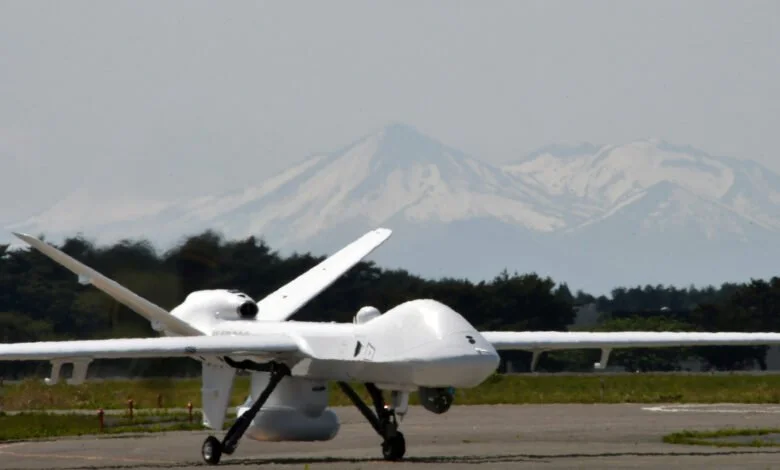Drone Competition in the Indo-Pacific: Regional Developments
Chinese drones patrol the South China Sea, Taiwan produces thousands of drones every month, and Indian and Pakistani drones collide at the border. Has the Indo-Pacific become a drone hotspot, and what strategic risks do these mostly cheap and easily accessible devices pose to the already tense conflict dynamics?
Drones, or unmanned aerial vehicles (UAVs), are unmanned, remote-controlled (weapon) platforms and can perform various functions, including reconnaissance, surveillance, and attacks. In the Indo-Pacific, numerous countries are deploying a range of drones with different capabilities, such as surveillance, safeguarding territories, and anti-piracy operations. Drones are used at sea, underwater, in the air, and on land, with their use and proliferation increasingly becoming “normalized”.
A Large Wing Span: From Ukraine to the Indo-Pacific
In 2025, Ukraine’s Deputy Minister of Defense stated that “sea drones” are a crucial innovation for any potential Indo-Pacific conflict. The war in Ukraine has demonstrated how destructive drones can be, from low-cost sea drones sinking warships to swarms of small UAVs damaging Russian warplanes deep inside enemy territory. Indo-Pacific countries are picking up on these developments, investing in drones, and using war-tested tactics as a blueprint. The global arms and technology markets ensure that innovations quickly “spread”: what is tested in the Black Sea today could soon be used in the South China Sea.
The Second Drone Age in the Indo-Pacific
The global proliferation of military drones is not stopping in the Indo-Pacific region, driven by the regional competitive and conflict dynamics.
China, a global leader in UAV production, recently presented the world`s largest drone carrier, deployed the advanced surveillance drone WZ-9 Divine Eagle in the South China Sea, and is developing unmanned drone boats. The US, to remain competitive, is increasing its drone presence in the Indo-Pacific, for example, with its emergency “Hellscape Strategy,” which envisages deploying a large number of UAVs in the Taiwan Strait. Confronted with China`s overwhelming military power, Taiwan is pursuing a “porcupine strategy” and building a large drone army with sea drones, kamikaze UAVs, and reconnaissance platforms. The Korean conflict is also driving both countries to increase their investments: North Korea has learned from the war in Ukraine and is now deploying small drones in swarms, while South Korea is focusing on defense systems and loitering munitions. In May 2025, Indian and Pakistani drones collided at the border: India deployed its loitering munitions, while Pakistan opted for drone swarms. Japan is strengthening its defenses against a growing Chinese drone presence and investing in military UAVs such as the MQ-9B SeaGuardian. Even smaller countries such as the Philippines, Vietnam, and Indonesia are investing in military drones. Altogether with the US and China, two active Great Powers in the Indo-Pacific and the largest buyers and sellers of drones, these tensions can easily turn into a drone arms race.
Strategic Risks
The proliferation poses both strategic risks and opportunities for regional security. Armed drones raise several legal and ethical concerns, such as over targeted killings, privacy violations, or accountability issues. Their accessibility lowers barriers to entry, e.g. also for non-state actors. The likelihood of violence increases, as political obstacles, such as the deployment of troops, are lowered. Additionally, speed and stealth increase the risk of misjudgments and unintended escalation. Inexpensive swarms also create dangerous incentives to strike first. At the same time, drones provide strategic opportunities, especially for smaller states to deter Great Powers with a limited military budget. Furthermore, drones offer reduced risk for military personnel, cost efficiency, precision, rapid responses, and longer endurance.
Path Forward
The challenge is to strike a balance between avoiding the risks and benefiting from the advantages. At the international level, binding regulations are currently unrealistic due to the wide variety of interests. Regional differences also matter, such as the focus on maritime security in the Indo-Pacific and the distinctive nature of conflicts. At the regional level, forums such as ARF, Quad, and FPDA offer opportunities to discuss drone operations, develop common standards, and establish red lines. Information exchange, joint exercises, and small arms control initiatives such as UAV buffer zones in disputed waters are recommended. Without regional regulations, the risk of a drone arms race threatens regional stability; however, under the current circumstances, an agreement seems unlikely. At the very least, like-minded countries should cooperate more closely and develop joint approaches to be ready if a “window of opportunity” opens to introduce these more broadly in the region.
Drone competition, from the Ukraine war to the Indo-Pacific, is a persistent phenomenon. The question is whether the Indo-Pacific can translate it into stability rather than chaos. Drones present both risks and opportunities, and the area must decide how to balance them. Action is needed now to shape best practices and cooperation before escalation risks intensify.


